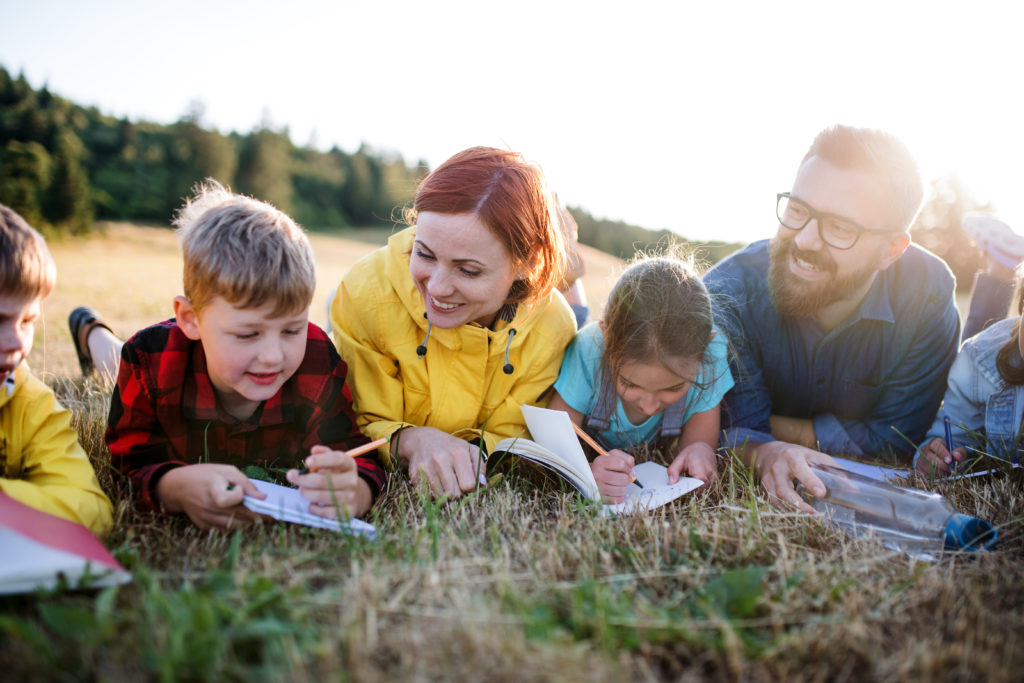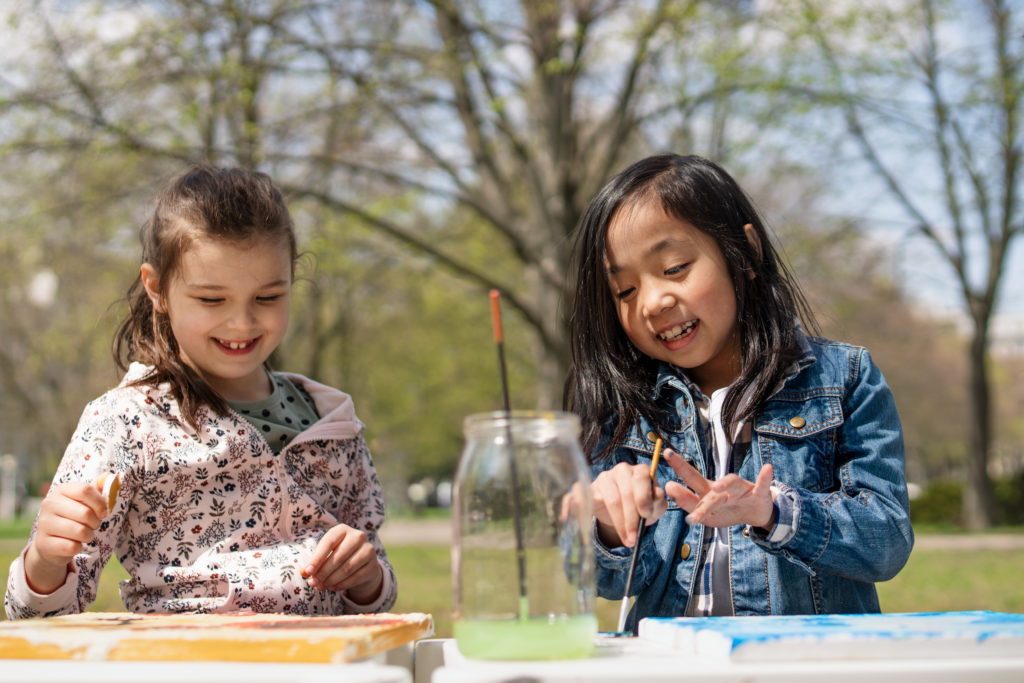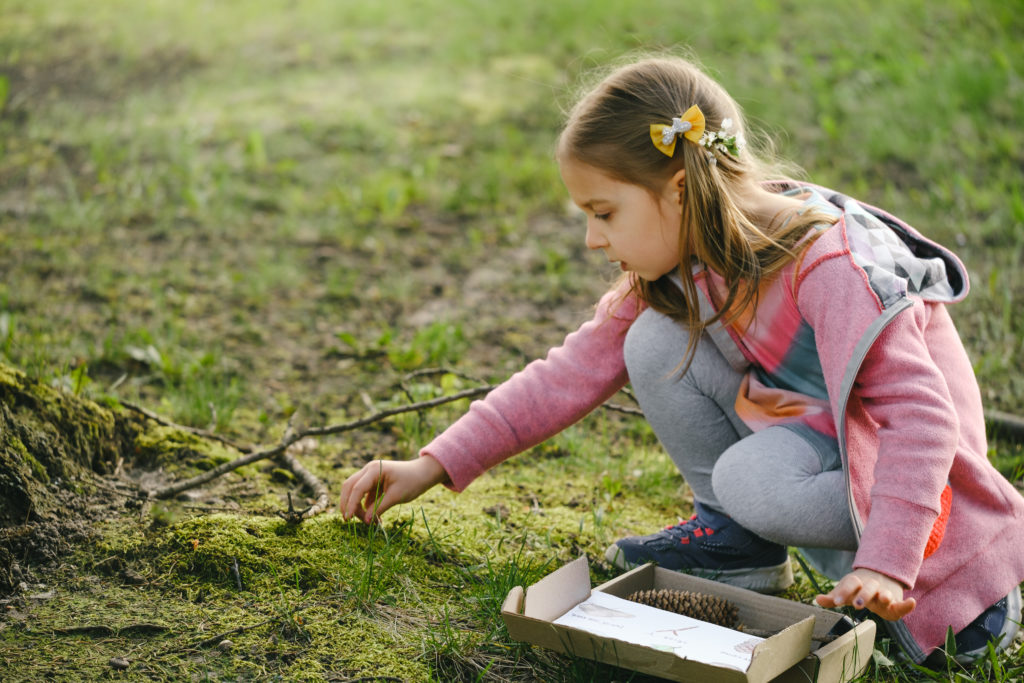Explore Outdoor Homeschooling: A Fresh Take on Education
Hey there, adventurous learners! 🌟
In a world that’s buzzing with homeschooling and nature-loving vibes, why not blend the two and create a unique learning experience? 🌳👩🏫
As the leaves start to paint the town in hues of red and gold, it’s the perfect season to dive into the wonders of outdoor homeschooling.
Sure, the idea might sound like a breath of fresh air (literally!), but we get it—choosing to educate your kiddos under the open sky comes with its own set of questions and, let’s be honest, a tad bit of overwhelm. 😅
But worry not, fellow outdoor enthusiasts, because we’ve got your back!
Let’s embark on this educational journey that not only tickles your brain cells but also lets you feel the crisp autumn breeze on your face.
Key Takeaways:
- Outdoor homeschooling combines the benefits of homeschooling and nature-based learning.
- It enhances learning, promotes physical and mental health, and develops important social skills.
- Getting started with outdoor homeschooling involves establishing a routine, creating a designated outdoor learning space, and investing in nature-based curriculum and materials.
- Overcoming challenges in outdoor homeschooling requires flexibility, adaptability, and alternative resources.
- Designing an outdoor classroom, incorporating nature study, and engaging in outdoor learning activities are key components of outdoor homeschooling.
The Benefits of Outdoor Homeschooling

Outdoor homeschooling offers a range of benefits for both children and parents. When children learn in nature, it enhances their curiosity, observation skills, and problem-solving abilities.
They have the opportunity to explore and discover the world around them through hands-on activities, fostering a deep connection to the natural environment.
The physical and mental health benefits of outdoor homeschooling cannot be overstated. Children engage in physical activity while being exposed to fresh air and sunshine, promoting their overall well-being.
Moreover, outdoor homeschooling promotes the development of important social skills.
Children learn to cooperate and work as a team when engaging in nature-based activities, building their ability to communicate and collaborate effectively.
By utilizing the outdoor environment as a classroom, children develop a lifelong love for learning and a sense of stewardship for the environment. They gain a deeper understanding and appreciation for the natural world, fostering a commitment to its preservation for future generations.
Incorporating a nature-based curriculum is key to the success of outdoor homeschooling.
By integrating subjects like science, math, literature, and art through a nature lens, children can connect with and understand academic concepts in a meaningful way.
Through nature study and exploration, they develop a sense of wonder and curiosity, cultivating a lifelong love for learning. Outdoor homeschooling truly offers a unique and enriching educational experience that nurtures the whole child.
Getting Started with Outdoor Homeschooling

Are you ready to embark on the exciting journey of outdoor homeschooling?
Here are a few key steps to help you get started.
- Establish a routine: Set a schedule that includes dedicated outdoor learning time. This will provide structure and ensure that outdoor education becomes an integral part of your homeschooling routine.
- Create a designated outdoor learning space: Whether it’s your backyard, a local park, or a nature reserve, having a designated outdoor learning space will help you and your child stay focused and engaged in nature-based learning.
- Invest in nature-based curriculum and materials: Choose curriculum and learning materials that align with your child’s interests and learning goals. Look for resources that emphasize hands-on activities, observation skills, and outdoor experiential learning.
- Incorporate regular nature study and outdoor experiential learning activities: Make nature study a regular part of your curriculum and engage in outdoor experiential learning activities such as nature walks, scavenger hunts, and science experiments. This will foster a deeper connection to the natural world and enhance your child’s learning experience.
- Seek out local resources and community groups: Explore nature centers, homeschool co-ops, and outdoor education programs in your area. These resources can provide additional support, guidance, and opportunities for your outdoor homeschooling journey.
Remember, getting started with outdoor homeschooling is all about taking that first step into the great outdoors and embracing the endless possibilities for learning and exploration. Enjoy the journey!
Overcoming Challenges in Outdoor Homeschooling

While outdoor homeschooling can be incredibly rewarding, it also presents its fair share of challenges.
As homeschooling parents, we may face obstacles such as lack of accessibility to nature, inclement weather, and logistical issues.
However, with some creativity and adaptability, we can overcome these challenges and make the most of our outdoor homeschooling journey.
Alternative Outdoor Learning Spaces
Not everyone has easy access to sprawling forests or pristine nature reserves. But that doesn’t mean outdoor homeschooling is out of reach.
Consider alternative outdoor learning spaces, such as botanical gardens, local parks, or even your own backyard.
These spaces can offer valuable opportunities for exploration and hands-on learning, even if they are smaller in scale.
Embracing Flexibility and Adapting Plans
Weather conditions can sometimes put a damper on our outdoor homeschooling plans.
However, instead of viewing it as a setback, we can embrace the flexibility of outdoor homeschooling and adapt our plans accordingly.
On days when inclement weather prevents us from going outside, we can engage in virtual outdoor experiences or explore indoor nature-themed activities.
This flexibility ensures that our children continue to learn and connect with the natural world, regardless of the weather.
Prioritizing Safety and Common Sense
When engaging in outdoor activities, safety should always be a top priority.
As homeschooling parents, we need to use our common sense and take necessary precautions to ensure the well-being of our children.
This includes selecting appropriate outdoor activities based on our child’s age and abilities, using proper protective gear, and being aware of potential hazards in the outdoor environment.
By prioritizing safety, we can provide a secure and enriching outdoor homeschooling experience for our children.
Designing an Outdoor Classroom for Homeschooling
Creating an outdoor classroom for homeschooling is an exciting endeavor that allows you to blend the wonders of nature with the educational journey of your child.
By designing a purposeful and engaging learning environment in nature, you can enhance their learning experience and foster a deeper connection to the outdoors.
Here are some key considerations to help you design an outdoor classroom that facilitates learning in nature:
1. Layout and Arrangement:
- Create designated seating areas for focused learning activities.
- Ensure there is ample open space for hands-on exploration and group activities.
- Incorporate natural elements like logs, rocks, and plants to create learning stations.
2. Natural Materials:
- Utilize natural materials to provide sensory experiences and connect children to the environment.
- Create learning stations with logs for seating, rocks for counting or sorting, and plants for observation.
- Encourage children to interact with these materials and explore their textures, smells, and colors.
3. Storage Solutions:
- Include storage solutions to keep materials and resources organized and easily accessible.
- Consider using bins, crates, or shelves to store books, art supplies, and outdoor learning tools.
- Label storage areas to promote independence and reinforce organizational skills.
4. Integration of Technology:
- Consider incorporating technology to document and enhance outdoor learning experiences.
- Use tablets or cameras to capture photos or videos of interesting discoveries and observations.
- Integrate nature-themed educational apps or online resources to supplement your curriculum.
5. Safety Measures:
- Prioritize safety in your outdoor classroom design by ensuring the space is free from hazards.
- Remove any sharp objects, secure loose structures, and address any potential safety concerns.
- Consider incorporating shade structures or portable tents to provide protection from the elements.
Designing an outdoor classroom for homeschooling allows you to create a dynamic and inspiring learning environment that fosters a love for learning in nature.
With careful planning and a focus on incorporating natural elements, you can create a space where your child can thrive academically, emotionally, and physically.
Nature-Based Curriculum and Resources for Outdoor Homeschooling

Incorporating a nature-based curriculum and utilizing appropriate resources are essential for a successful outdoor homeschooling experience.
Choosing a curriculum that aligns with your educational philosophy, learning goals, and your child’s interests is crucial.
Look for nature-based curriculum materials that emphasize hands-on activities, observation skills, nature study, and outdoor experiential learning. These resources will provide a solid foundation for your outdoor homeschooling journey.
To supplement your curriculum, utilize online resources such as virtual field trips or nature study websites. These platforms offer interactive and engaging content that can enhance your child’s understanding and connection to the natural world.
Additionally, incorporate nature-based books, field guides, and nature-inspired art supplies into your homeschooling resources. These materials will foster exploration, creativity, and a deeper appreciation for the natural environment.
If you’re looking to expand your resources and network with other outdoor homeschooling families, consider joining nature-focused homeschool co-ops or participating in outdoor education programs.
These community-based organizations provide opportunities for collaboration, support, and shared experiences. They can also offer access to specialized knowledge and outdoor learning opportunities that may not be readily available to individual homeschooling families.
Incorporating Nature Study into Your Outdoor Homeschooling

Nature study is a fundamental aspect of outdoor homeschooling, allowing children to develop a deep understanding and appreciation for the natural world around them.
By incorporating nature study into your homeschooling routine, you can create meaningful and engaging learning experiences for your child.
Here are some tips to help you seamlessly integrate nature study into your outdoor homeschooling:
- Plan regular nature walks: Take regular walks in nature with your child, encouraging them to observe and interact with the environment. Use this time to discuss different plants, animals, and natural phenomena you encounter.
- Encourage nature journaling: Provide your child with a nature journal where they can record their observations, sketches, and thoughts about the outdoor world. This activity promotes reflection, creativity, and critical thinking.
- Create nature-based projects: Engage your child in hands-on projects inspired by nature, such as building birdhouses, planting a garden, or creating nature-inspired artwork. These projects allow for a deeper exploration of ecological concepts and foster a sense of stewardship for the environment.
- Utilize field guides and identification apps: Supplement your nature study with field guides and identification apps that help your child identify plants, animals, and other natural elements they encounter. This strengthens their observation skills and enhances their learning experience.
By incorporating these strategies into your outdoor homeschooling routine, you can provide your child with a rich and immersive nature study experience that nurtures their curiosity, scientific inquiry, and love for the natural world.
Outdoor Learning Activities for Homeschooling

Homeschooling outdoors provides a unique opportunity to engage in a wide range of outdoor learning activities that foster curiosity, creativity, and a deeper connection with nature.
Whether you’re exploring your backyard, local park, or nature reserve, here are some exciting outdoor learning activities to incorporate into your homeschool routine:
- Nature scavenger hunt: Create a list of items for your child to find in nature, such as different types of leaves, rocks, or animal tracks. Encourage them to observe and explore their surroundings while developing their observation and identification skills.
- Outdoor science experiments: Conduct hands-on science experiments outdoors, such as creating a volcano using baking soda and vinegar, or studying the life cycle of butterflies by raising caterpillars. These experiments provide a fun and interactive way to learn scientific concepts in a natural setting.
- Gardening: Start a garden together and involve your child in every step of the process, from preparing the soil to planting and caring for the plants. This activity teaches children about plant life cycles, responsibility, and the importance of caring for the environment.
- Nature-based arts and crafts: Get creative with nature-inspired art projects, such as leaf rubbings, rock painting, or making nature collages using materials found outdoors. This allows children to express their creativity while exploring the textures and colors of the natural world.
Remember to tailor these activities to your child’s age, interests, and learning goals. Encourage them to ask questions, make observations, and reflect on their experiences.
By incorporating these outdoor learning activities into your homeschool routine, you can create meaningful and engaging educational experiences that nurture a love for learning and a deep appreciation for the natural world.
Integrating Technology in Outdoor Homeschooling

Technology has become an integral part of our lives, and it can also play a valuable role in outdoor homeschooling.
By incorporating technology into our outdoor learning adventures, we can enhance the learning experience, access additional resources, and foster a deeper connection to the natural world.
One way to integrate technology is through the use of nature-themed educational apps or online platforms. These apps provide interactive lessons, virtual field trips, and engaging activities that complement your nature curriculum.
They can be a valuable tool for reinforcing concepts, conducting research, or exploring natural environments beyond your immediate surroundings.
Photography and videography activities also offer a wonderful opportunity to document and reflect on outdoor experiences. Encourage your child to capture special moments, interesting discoveries, or unique perspectives through their camera lens.
This not only helps them develop their artistic expression but also allows for later reflection and deeper understanding of their outdoor learning journey.
Technology can also be used to connect with other outdoor homeschooling families, whether through online nature study groups, social media platforms, or virtual meetups.
By sharing experiences, resources, and ideas with like-minded individuals, you can build a supportive community and gain inspiration for future outdoor learning adventures.
Integrating Technology Responsibly
As with any tool, it’s important to find the right balance between technology use and hands-on engagement with the natural world. Technology should support and enrich the outdoor learning experience, rather than replace it.
Ensure that your outdoor homeschooling remains grounded in real-world experiences and direct interactions with nature. Strive to strike a balance that encourages curiosity, exploration, and a sense of wonder while utilizing the benefits that technology can provide.
Building a Community for Outdoor Homeschooling

Building a community for outdoor homeschooling is a valuable endeavor that can enrich both your child’s educational experience and your own journey as a homeschooling parent.
By connecting with like-minded families, joining homeschool co-ops, and participating in outdoor education programs, you can create a support network that provides resources, knowledge, and shared experiences.
One way to build a community for outdoor homeschooling is to seek out local homeschool co-ops that focus on outdoor education or nature-based learning. These groups often organize regular meet-ups, field trips, and workshops where children can learn together and parents can exchange ideas and advice.
Participating in these co-ops can provide opportunities for your child to make friends, engage in cooperative learning activities, and develop social skills.
Another avenue to explore is outdoor education programs offered by nature centers, zoos, museums, or environmental organizations. These programs often offer interactive learning experiences, guided nature walks, and hands-on activities that complement your outdoor homeschooling curriculum.
They can also provide valuable resources and expertise in areas such as wildlife conservation, ecology, and environmental stewardship.
Additionally, the online world offers numerous communities and social media groups dedicated to outdoor homeschooling.
These platforms allow you to connect with other outdoor homeschooling families, share resources and ideas, and seek support when needed. You can join discussions, ask questions, and find inspiration from the experiences of other families who are navigating the same path.
Balancing Structure and Flexibility in Outdoor Homeschooling

When it comes to outdoor homeschooling, finding the right balance between structure and flexibility is key to creating a successful learning experience.
Having a homeschool routine that includes dedicated outdoor learning time provides a sense of structure and consistency to your days. It helps establish a rhythm and ensures that outdoor education becomes a regular and intentional part of your homeschooling journey.
However, it’s also important to remain flexible and open to spontaneous outdoor discoveries and interests.
As an outdoor homeschooling parent, I’ve found that incorporating a mix of structured activities and free play in our outdoor homeschool routine has been beneficial.
Structured activities provide a framework for learning and allow us to cover specific topics or skills. We might have a nature-themed lesson or experiment planned for the day.
But at the same time, we leave room for free play and unstructured exploration, where my child can follow their curiosity and pursue their own interests in the natural environment. This balance allows for both focused learning and the joy of discovery, creating a well-rounded outdoor education experience.
Making clear expectations and boundaries
To maintain a balance between structure and flexibility, it’s important to make clear expectations and set boundaries. Communicate to your child what is expected of them during the designated outdoor learning time.
For example, you might establish guidelines for safety, such as staying within a certain area or wearing appropriate outdoor gear. You can also discuss goals or objectives for the day’s activities.
By setting these expectations, you provide a sense of structure and purpose to your outdoor homeschooling sessions, while still allowing for the freedom to explore and learn in their own unique way.
Encouraging creativity and independent thinking
One of the wonderful aspects of outdoor homeschooling is the opportunity for creativity and independent thinking. Encourage your child to think outside the box and come up with their own ideas and solutions during outdoor activities.
Let them take the lead in their learning journey and follow their own interests and curiosities. By fostering independent thinking and creativity, you’re helping your child develop important life skills and a love for learning that extends beyond the outdoor classroom.
Incorporating Seasonal Changes in Outdoor Homeschooling

One of the unique aspects of outdoor homeschooling is the opportunity to experience and learn from the changing seasons. Each season brings its own set of wonders and teaches valuable lessons about the natural world.
By incorporating seasonal changes into your homeschooling, you can create a dynamic and engaging learning experience for your child.
As the seasons change, take advantage of the opportunities to observe and document the shifts in nature. Plan nature walks or field trips that highlight the beauty and significance of each season.
Use seasonal themes as a springboard for nature study, art projects, or literature choices.
By immersing your child in the ever-changing outdoor environment, you can foster a deeper connection to nature and a greater understanding of ecological relationships.
Engaging all the senses is key to truly experiencing the changing seasons. Encourage your child to touch, smell, listen, and even taste the natural elements of each season.
Help them notice the subtle differences in temperature, the scents carried on the breeze, the sounds of birdsong or falling leaves, and the flavors of seasonal fruits and vegetables.
By fully engaging with their surroundings, your child can develop a profound appreciation for the beauty and diversity of the natural world.
Embracing the Teachable Moments:
- Observe changes in plant life: Talk about the life cycles of plants, from budding and blooming to seed dispersal and dormancy.
- Track animal behavior: Discuss how animals adapt to the changing seasons, such as hibernation or migration.
- Study weather patterns: Explore how weather changes throughout the year and how it affects the natural environment.
- Learn about seasonal adaptations: Investigate how plants and animals have evolved to survive in different seasonal conditions.
Remember to encourage your child to ask questions, make observations, and draw connections between the seasons and the concepts they are learning.
By incorporating seasonal changes in your outdoor homeschooling, you can create a rich and meaningful learning experience that will foster a lifelong love and appreciation for the natural world.
Overcoming Weather Challenges in Outdoor Homeschooling

When it comes to outdoor homeschooling, one of the biggest challenges we face is unpredictable weather.
However, with a little creativity and adaptability, we can still make the most of our outdoor learning experiences regardless of the weather conditions.
Here are some tips for overcoming weather challenges in outdoor homeschooling:
1. Have a backup plan:
It’s always a good idea to have a backup plan for days when the weather doesn’t cooperate. Have a list of indoor nature-themed activities or virtual experiences that you can do instead.
This could include watching nature documentaries, exploring online nature resources, or engaging in nature-inspired arts and crafts.
2. Dress for the weather:
Invest in proper clothing and gear to ensure comfort and safety in various weather conditions. Dress in layers and wear appropriate footwear. Don’t forget to pack rain jackets, umbrellas, or even snow gear depending on the season.
By being prepared and dressing appropriately, you can still enjoy outdoor learning even in less-than-ideal weather.
3. Embrace the opportunities:
Instead of seeing bad weather as a barrier, embrace the opportunities that different weather brings. Use rainy days to study weather patterns or observe the behavior of animals in wet conditions.
Take advantage of snowy days to explore the science behind snowflakes or track animal footprints in the snow. By shifting our perspective, we can turn challenging weather into valuable learning experiences.
Remember, nature is always changing, and weather is part of that natural cycle. By adapting to the weather and finding creative solutions, we can continue to enjoy the benefits of outdoor homeschooling regardless of what Mother Nature throws our way.
Documenting and Reflecting on Outdoor Homeschooling Experiences

Documenting and reflecting on outdoor homeschooling experiences is an integral part of the journey. It allows us to preserve memories, deepen learning, and track our growth over time.
One effective way to document our outdoor adventures is through nature journaling.
Encourage your child to keep a journal where they can write about their observations, sketch the plants and animals they encounter, and paste photos or drawings of their favorite moments.
Nature journaling not only serves as a creative outlet but also helps children develop their observation skills and foster a deeper connection with the natural world.
Reflection is another valuable practice in outdoor homeschooling. Set aside dedicated time for your child to reflect on their outdoor experiences. This could be through open-ended conversations, written reflections, or even artistic expression.
Encourage them to share their thoughts, feelings, and insights about what they learned, discovered, or found fascinating during their time outdoors.
Reflection helps children make connections between their outdoor experiences and academic concepts, personal growth, and environmental stewardship.
As parents, we can also document and reflect on our own experiences as we accompany our children on their outdoor homeschooling journey.
Take photographs or videos to capture special moments and create a visual record of your adventures. Use these records as prompts for reflection and discussion with your child, fostering meaningful conversations about the beauty and wonder of nature.
By documenting and reflecting on our experiences, we can create a rich tapestry of memories and learning that will last a lifetime.
Benefits of Documenting and Reflecting on Outdoor Homeschooling Experiences:
- Preserves memories of outdoor adventures
- Deepens learning and understanding
- Enhances observation skills and connection with nature
- Fosters self-reflection and personal growth
- Encourages meaningful conversations and discussions
- Creates a record of progress and accomplishments
Expanding Your Outdoor Homeschooling Toolkit

As I continue my outdoor homeschooling journey, I have come to realize the importance of constantly expanding my toolkit of resources and inspiration.
To truly make the most of homeschooling outdoors, it’s crucial to seek out new ideas, materials, and experiences that enhance our learning in nature.
Here are a few ways I have found to expand my outdoor homeschooling toolkit:
- Explore nature-based educational websites and blogs: There are countless online resources dedicated to outdoor education and nature-based learning. From lesson plans to activity ideas, these websites and blogs offer a wealth of information and inspiration for homeschooling outdoors.
- Visit your local library or bookstore: The shelves of your local library or bookstore are treasure troves of nature-themed books, field guides, and educational resources. Take the time to browse through their collections and discover new resources that align with your child’s interests and learning goals.
- Attend workshops or webinars: Many organizations and educators offer workshops, conferences, and webinars focused on outdoor education and homeschooling. These events provide opportunities to learn from experts in the field and connect with like-minded families who share your passion for homeschooling outdoors.
- Invest in quality outdoor equipment: Having the right equipment can greatly enhance your outdoor learning experiences. Consider investing in binoculars, magnifying glasses, field journals, or other tools that encourage exploration and discovery in nature.
By constantly seeking new resources and inspiration, I am able to keep our outdoor homeschooling journey fresh and engaging. Remember, outdoor education is a lifelong journey, and there is always something new to learn and explore in the great outdoors.
Enjoying the Journey of Outdoor Homeschooling

As a homeschooling parent, I have found that outdoor homeschooling is not just about the educational benefits—it’s a journey of discovery and joy for both me and my child.
The freedom and flexibility of learning in nature have allowed us to embrace a truly unique homeschooling experience.
Every day spent outdoors is an opportunity to witness the wonders of the natural world and develop a deep appreciation for its beauty. I’m constantly amazed by the curiosity and excitement my child exhibits as we explore together.
Whether we’re discovering new plants, observing wildlife, or simply enjoying the fresh air, the journey of outdoor homeschooling is filled with awe and wonder.
Not only does outdoor homeschooling provide a rich learning environment, but it also strengthens the bond between parent and child. We share special moments and create memories that will last a lifetime.
From our nature walks and hands-on experiments to our shared fascination with the changing seasons, the journey of outdoor homeschooling has brought us closer together.
Through outdoor homeschooling, my child and I have developed a deep sense of connection to the natural world.
We’ve learned to appreciate the intricate web of life, and we strive to be responsible stewards of the environment. This journey has taught us the importance of sustainability and the need to protect and preserve our planet for future generations.
FAQ
What are the benefits of outdoor homeschooling?
Outdoor homeschooling enhances learning, promotes physical and mental health, develops social skills, provides hands-on learning opportunities, and fosters a connection to the natural world.
How do I get started with outdoor homeschooling?
To get started, establish a routine and schedule, create a designated outdoor learning space, invest in nature-based curriculum and materials, and seek out local resources and community groups that support outdoor homeschooling.
What challenges might I face in outdoor homeschooling?
Some common challenges in outdoor homeschooling include lack of accessibility to nature, inclement weather, and logistical issues. However, there are ways to overcome these challenges, such as finding alternative outdoor learning spaces or engaging in virtual outdoor experiences.
How can I design an outdoor classroom for homeschooling?
When designing an outdoor classroom, consider the layout and arrangement of the space, utilize natural materials, incorporate storage solutions, integrate technology, and prioritize safety.
What nature-based curriculum and resources should I use for outdoor homeschooling?
Choose a curriculum that aligns with your educational philosophy and your child’s interests, incorporate online resources and nature-themed books, join nature-focused homeschool co-ops or programs, and utilize field guides and nature identification apps.
How can I incorporate nature study into my outdoor homeschooling?
Incorporate regular nature walks, nature journaling, nature scavenger hunts, and hands-on activities into your homeschool schedule. Use field guides and nature identification apps to enhance your nature study experience.
What types of outdoor learning activities can I include in homeschooling?
Some examples of outdoor learning activities include nature hikes, outdoor science experiments, nature-based arts and crafts, gardening, wildlife observation, and nature-inspired storytelling or poetry.
How can I integrate technology into outdoor homeschooling?
Use nature-themed educational apps or online platforms, incorporate photography or videography activities, utilize online resources such as virtual field trips, and connect with other outdoor homeschooling families through technology.
How can I build a community for outdoor homeschooling?
Seek out local homeschool co-ops or support groups, participate in outdoor education programs, join online communities or social media groups, and organize outdoor learning gatherings or nature outings with other homeschooling families.
How can I balance structure and flexibility in outdoor homeschooling?
Establish a homeschool routine that includes dedicated outdoor learning time, allow for open-ended exploration and spontaneity, incorporate a mix of structured activities and free play, and encourage creativity and independent thinking.
How can I incorporate seasonal changes in outdoor homeschooling?
Embrace the unique opportunities that each season brings, plan seasonal nature walks or field trips, incorporate seasonal themes into your curriculum, and use the natural environment to explore concepts related to the seasons.
How can I overcome weather challenges in outdoor homeschooling?
Develop backup plans for indoor activities or virtual experiences, invest in proper clothing and gear, embrace the opportunities that different weather conditions bring, and teach your child about weather patterns and seasonal changes.
How can I document and reflect on outdoor homeschooling experiences?
Encourage your child to keep a nature journal or scrapbook, incorporate reflection time into your homeschool routine, use photography or videography to capture moments, and reflect on the connections between outdoor experiences and learning, personal growth, and environmental stewardship.
How can I expand my outdoor homeschooling toolkit?
Explore nature-based educational websites, visit your local library or bookstore for resources, attend workshops or conferences, invest in outdoor equipment, and continually seek new resources and inspiration.
How can I enjoy the journey of outdoor homeschooling?
Embrace the freedom and flexibility of outdoor homeschooling, appreciate the beauty and wonder of the natural world, celebrate milestones and achievements, seek joy and inspiration in everyday moments, and prioritize the bonds and memories created in the great outdoors.







